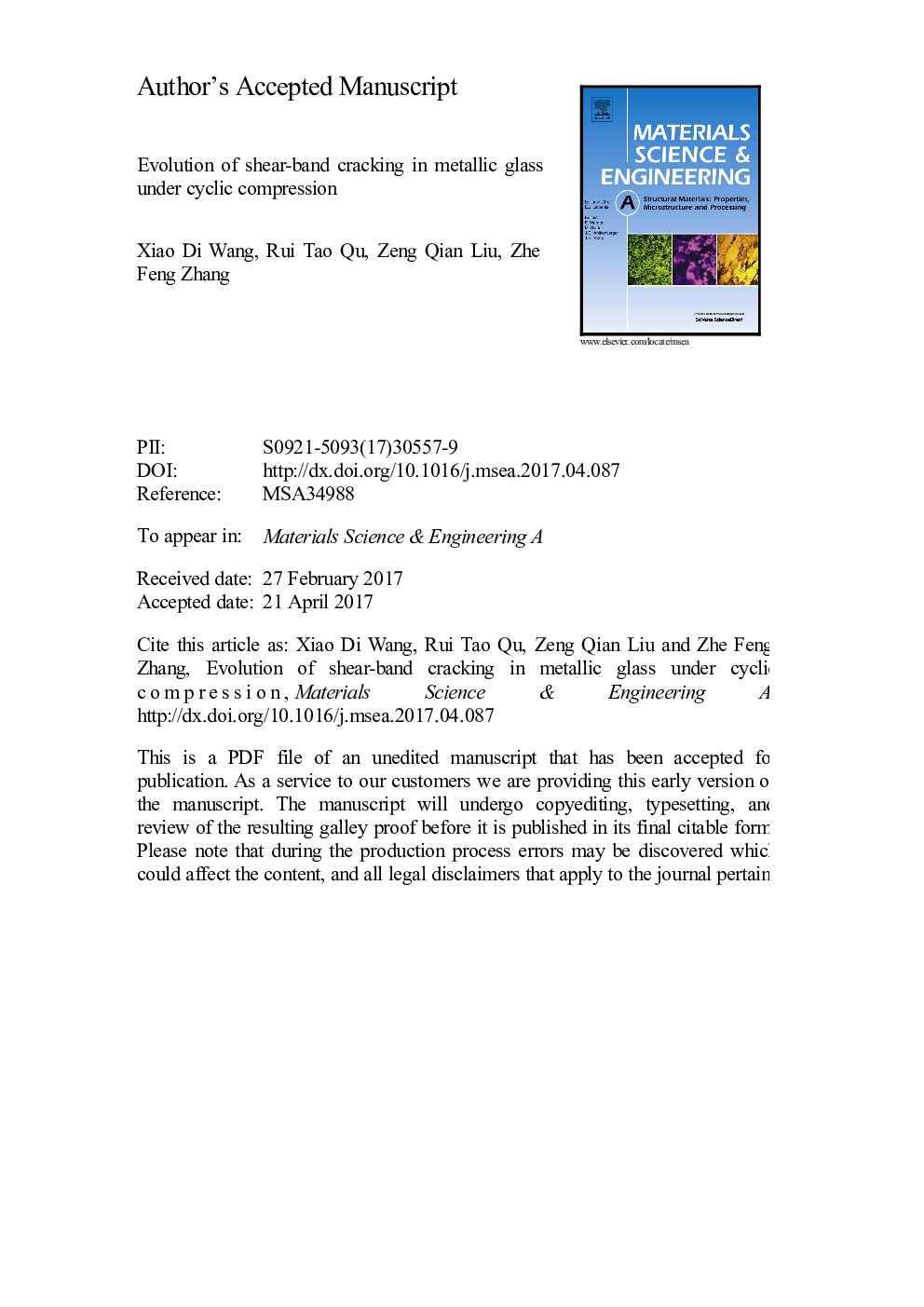| Article ID | Journal | Published Year | Pages | File Type |
|---|---|---|---|---|
| 5456014 | Materials Science and Engineering: A | 2017 | 18 Pages |
Abstract
The evolution of shear-band cracking in a typical Zr-based metallic glass under high stress level was explored by interrupted cyclic compression-compression experiments. It was found that the fatigue crack was obviously easier to form along the shear band under cyclic compression than under monotonic loading. Furthermore, the critical shear offset for fatigue crack propagation was obtained, which increases firstly and then decreases, depending on the competition between the accumulation of dilatation damage in the shear band and the release of stress concentration caused by plastic deformation. Moreover, to elucidate the cracking mechanisms, a concept of “fatigue shear-band propagation rate”, an analogy with the fatigue crack propagation rate, is proposed and characterized. These results may enhance the understanding on fatigue damage mechanism of MG and offer quantitative guidance on future design for MG and MG matrix composites with excellent fatigue property.
Related Topics
Physical Sciences and Engineering
Materials Science
Materials Science (General)
Authors
Xiao Di Wang, Rui Tao Qu, Zeng Qian Liu, Zhe Feng Zhang,
